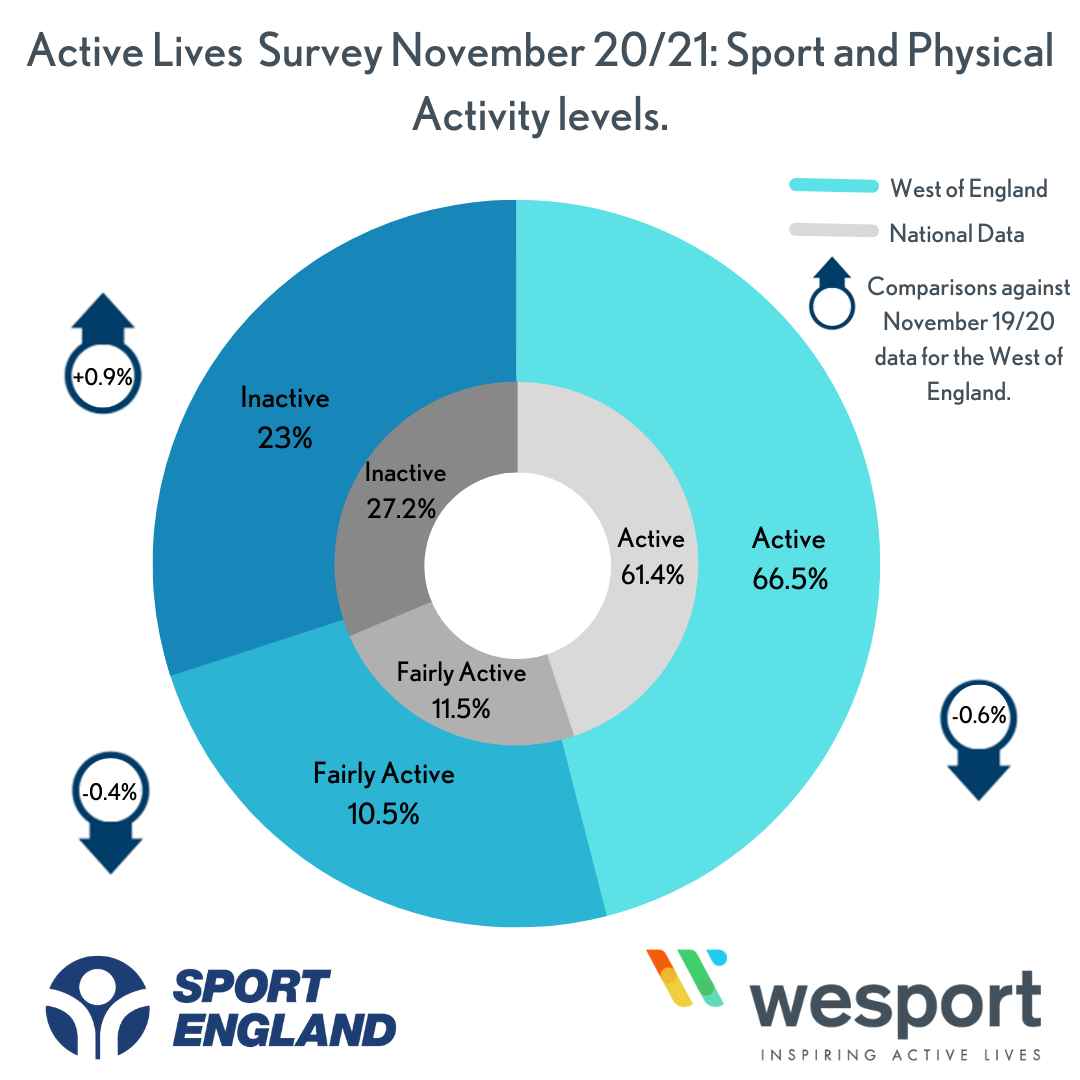The latest Active Lives data from Sport England has been released!
This report presents data from the Active Lives Adult Survey for the period mid-November 2020 to mid-November 2021 representing adults aged 16+ in England.
This report contains a full year of coronavirus (Covid-19) restrictions, including comparisons to both the first easing of restrictions in summer 2020 and to pre-pandemic.
Below you will find the headlines drawn from the data for the West of England.
Physical Activity levels
When comparing the figures to the national data it is clear to see that the population in the West of England are more active than the rest of the nation. However, activity levels within the West of England have decreased from the previous report released in November 2020 by 0.6% meaning this percentage of the population were still being affected by the disruption COVID-19 has had on sporting activities.
This has subsequently seen an increase in the number of people who are inactive in the West of England, over the year, from 22.21% to 23%. An increase of 11000 people.

Wesport Headlines
- The population for the West of England area has increased by 9.7%, or 103,000 up to 1.17 million people. Within this, the 55+ population has increased by 15.1%
- The inactive proportion has continued to worsen since the pandemic (up 0.9% since 19-20) and is now at 23.0%. This remains higher than baseline (20.9% in 15-16)
- Inequalities continue to exist. Female inactivity rates have worsened whilst male inactivity has decreased and therefore created a gender inequality gap of 6%. NS SeC (National Statistics Socio-economic Classification) 6-8 are almost 3 times as likely to be inactive compared to NS SeC 1-2
- Within the inactive population,135,500 people do nothing! But over 90,000 are either doing something but not enough or are missing the intensity
- How people get their active minutes has continued to change, the time people spend walking for leisure is at an all time high and continuing to rise. But, traditional sport, cycling, fitness activities and walking for travel have all reduced
Read the full report here.